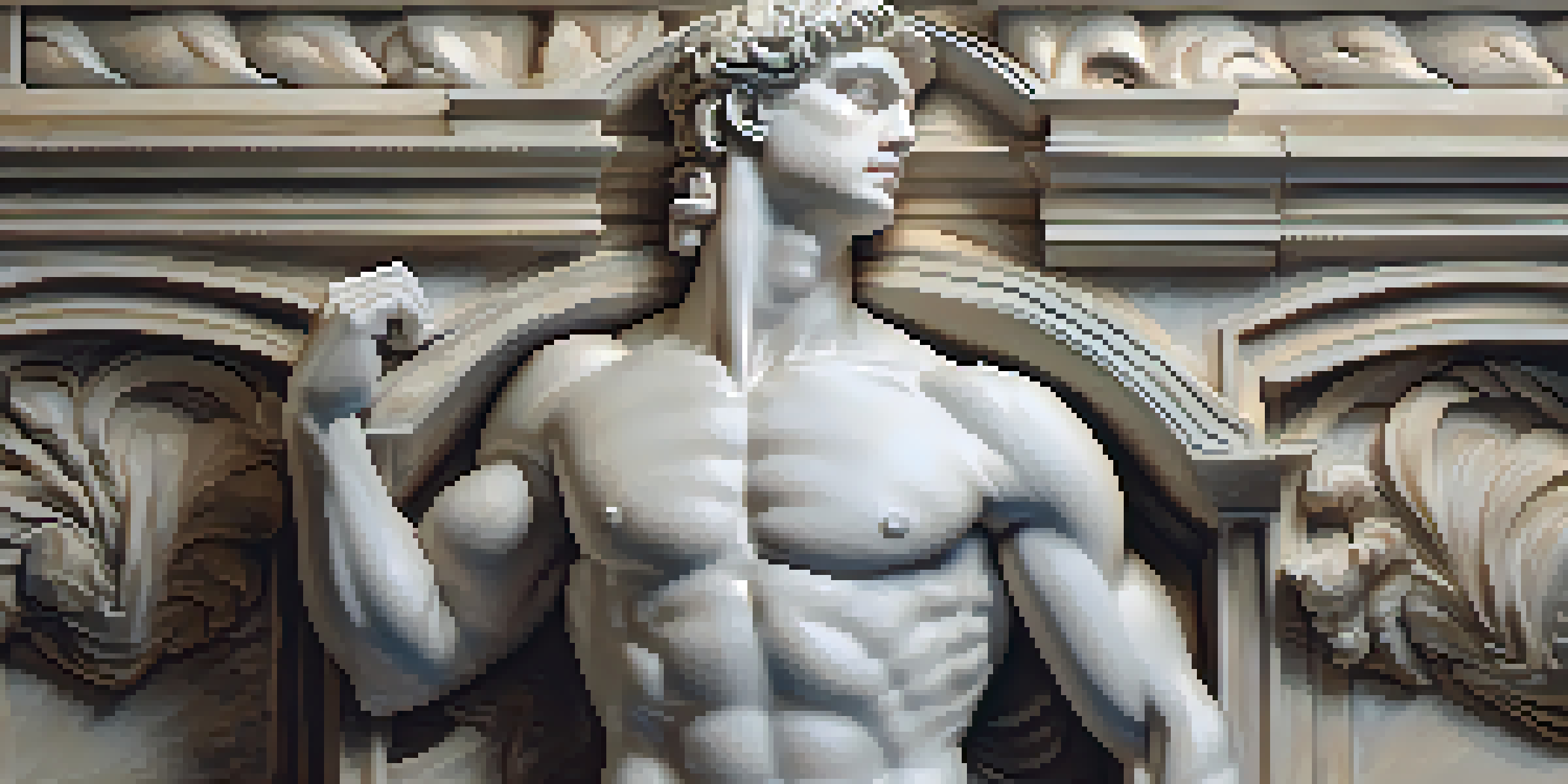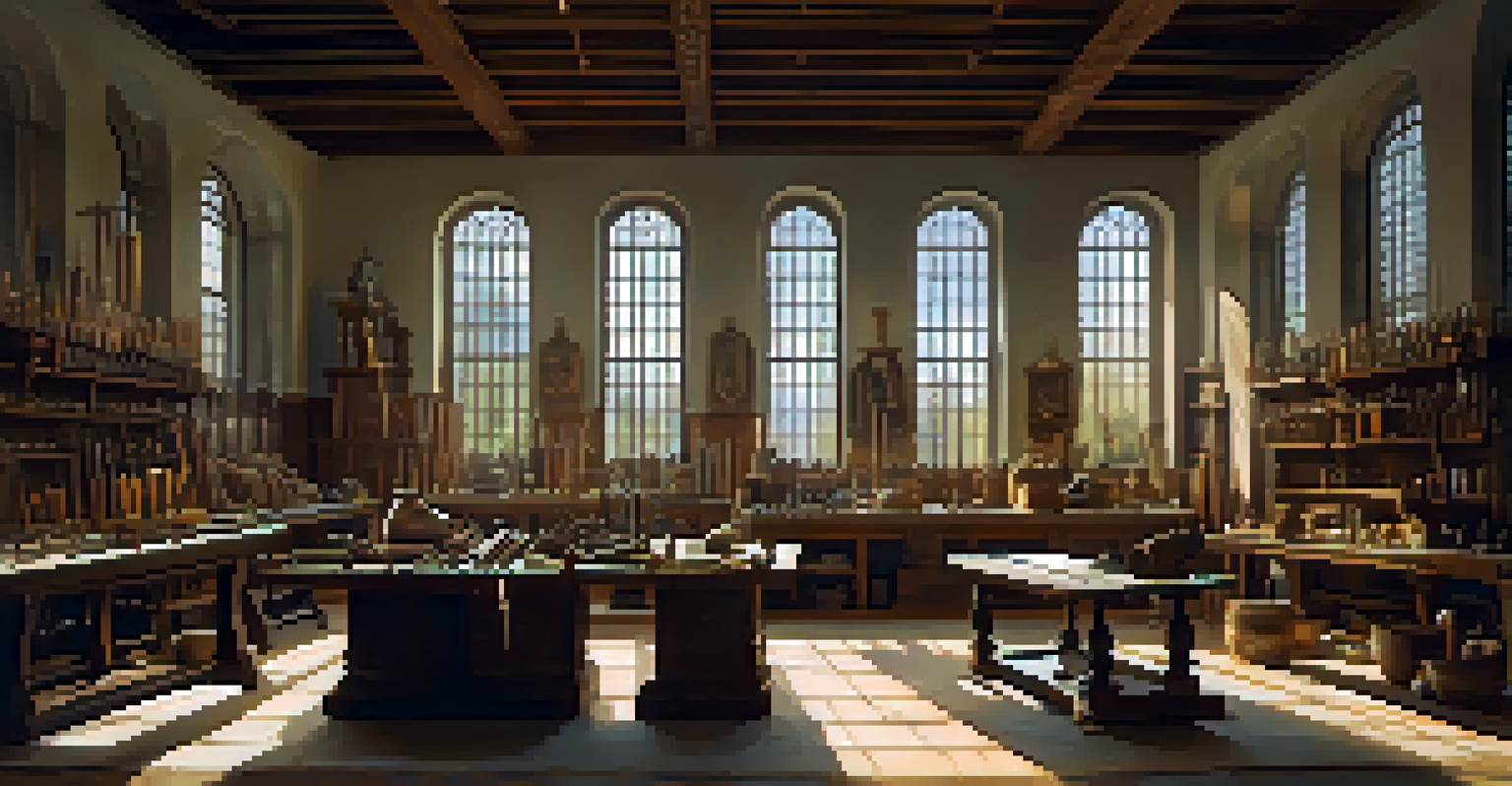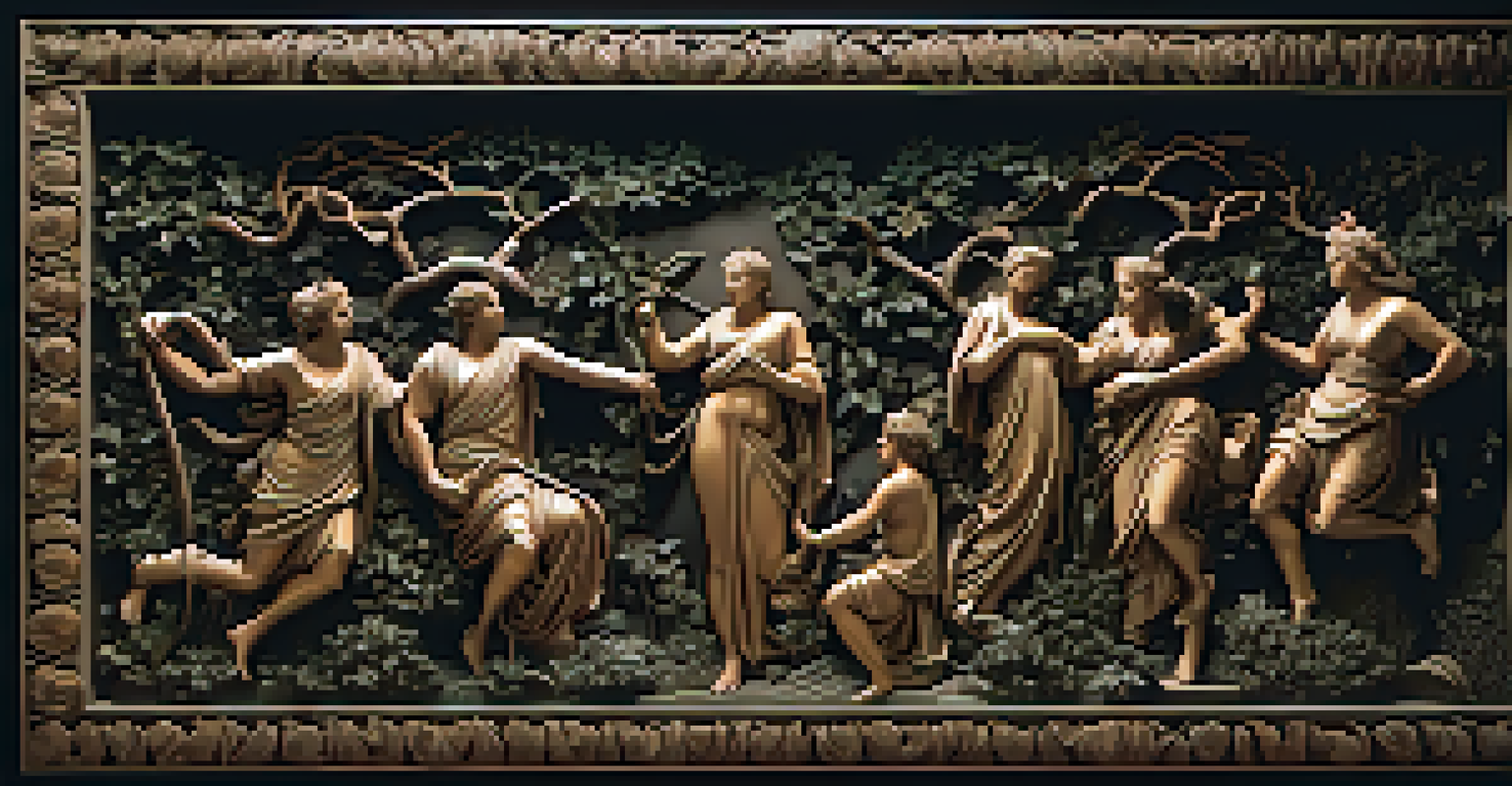Renaissance Carving: A Shift in Techniques and Ideals

Introduction to Renaissance Carving and Its Context
The Renaissance, a remarkable period from the 14th to the 17th century, marked a revival of classical learning and artistry. This era transformed the landscape of art, particularly through the medium of carving. Artists began to break free from the rigid styles of the Middle Ages, embracing more fluid and expressive forms.
Every artist dips his brush in his own soul, and paints his own nature into his pictures.
Renaissance carving was not just about creating art; it reflected a broader cultural shift towards humanism. This ideology emphasized the value of individual experience and emotional expression, which artists infused into their work. Statues and reliefs became more lifelike and engaging, captivating viewers with their realism.
As we delve deeper into Renaissance carving, it's essential to understand how these changes set the stage for future artistic movements. By exploring the techniques and ideals of this time, we can appreciate the foundation it laid for modern art and the ongoing evolution of creative expression.
Key Techniques in Renaissance Carving
One of the hallmark techniques of Renaissance carving was the use of chiaroscuro, which involves the dramatic contrast of light and shadow. This technique brought depth and dimension to sculptures, making them appear almost three-dimensional. Artists like Michelangelo mastered this style, creating figures that seemed to breathe and move.

Another significant advancement was the use of perspective in relief carving. Artists employed linear perspective to create a sense of depth, guiding the viewer's eye through the artwork. This innovative approach not only made the carvings more realistic but also enhanced their storytelling capacity.
Renaissance Carving Revolutionized Art
The Renaissance marked a transformative period where artists embraced realism and emotional expression in their carvings, setting the foundation for modern artistic movements.
Moreover, the revival of classical motifs, such as the use of mythological themes and human figures, became prevalent in Renaissance art. Carvers began to incorporate intricate details that celebrated the human form, showcasing unparalleled craftsmanship and a deep appreciation for anatomy.
Influence of Humanism on Carving Practices
Humanism played a pivotal role in shaping Renaissance carving, focusing on the human experience and emotions. Artists sought to depict not just the physical form but also the inner life of their subjects. This shift led to a more expressive style that resonated with viewers on a personal level.
Art is the most beautiful of all lies.
The emphasis on individualism meant that artists often portrayed specific, identifiable figures rather than generic representations. This personal touch allowed viewers to connect with the work, evoking empathy and understanding. As a result, carvings became powerful tools for storytelling, reflecting the complexities of human life.
Furthermore, humanism encouraged artists to draw inspiration from classical antiquity, blending the ideals of the past with contemporary themes. This fusion resulted in a unique style that celebrated both the beauty of the human body and the richness of human emotion, ultimately enriching the art of carving.
Notable Carvers and Their Masterpieces
Among the most celebrated carvers of the Renaissance was Donatello, whose works exemplified the era's artistic innovations. His sculpture, 'David,' is renowned for its intricate detail and lifelike quality, marking a departure from the more rigid forms of earlier periods. Donatello's ability to convey emotion through carving set a new standard for artists.
Another key figure was Gian Lorenzo Bernini, who brought dramatic expression to marble. His masterpiece, 'The Ecstasy of Saint Teresa,' showcases not only technical skill but also a deep understanding of human emotion and spirituality. Bernini's work exemplified how carving could evoke powerful feelings and engage the viewer's imagination.
Humanism Shaped Artistic Practices
The focus on human experience and individualism during the Renaissance influenced artists to depict lifelike figures, enhancing the emotional connection with viewers.
These artists, among others, pushed the boundaries of what was possible in carving, inspiring future generations. Their masterpieces continue to be studied and admired, highlighting the enduring impact of Renaissance carving on the art world.
Materials and Tools of Renaissance Carvers
Renaissance carvers had access to a variety of materials that greatly influenced their work. Marble was the material of choice for many artists, prized for its durability and ability to hold fine detail. The use of softer woods also became popular, allowing for intricate carvings and the creation of religious and decorative objects.
The tools used by Renaissance carvers were also evolving. Chisels, hammers, and rasps became more refined, enabling artists to achieve greater precision in their work. This advancement in tools allowed for more complex designs and finer details, pushing the limits of what could be created.
Moreover, the combination of different materials and innovative tools led to a rich diversity of styles and techniques. Carvers experimented with various finishes and treatments, enhancing the visual appeal of their work and showcasing their artistic prowess.
The Role of Patronage in Renaissance Carving
Patronage played a crucial role in the flourishing of Renaissance carving, as wealthy individuals and institutions commissioned works to showcase their status. This support allowed artists to experiment and refine their techniques, leading to groundbreaking creations. Patrons often had specific themes or subjects in mind, which influenced the direction of the artwork.
The Medici family, for example, were significant patrons of the arts, commissioning sculptures that reflected their ideals and aspirations. Their influence helped shape the artistic landscape of Florence, making it a hub for innovation and creativity. Such patronage enabled artists to pursue their craft full-time, fostering an environment ripe for artistic expression.
Patronage Fueled Artistic Innovation
Wealthy patrons played a vital role in the flourishing of Renaissance carving by commissioning works that encouraged artists to explore new techniques and themes.
As a result, the relationship between artists and patrons became a vital component of the Renaissance art scene. The expectations and demands of patrons often pushed artists to explore new ideas, leading to a dynamic exchange that enriched the art of carving.
Legacy of Renaissance Carving in Modern Art
The techniques and ideals established during the Renaissance continue to resonate in modern art. The emphasis on realism, emotion, and the human experience can be seen in contemporary carving and sculpture. Artists today often draw inspiration from the masters of the Renaissance, blending traditional methods with modern themes.
Moreover, the impact of Renaissance carving extends beyond visual arts; it has influenced architecture, design, and even literature. The celebration of the individual and the exploration of human emotion are themes that remain relevant and powerful in today's artistic landscape.

As we reflect on the legacy of Renaissance carving, it becomes clear that this period laid the groundwork for future artistic movements. The innovations and ideas born from this era continue to inspire artists worldwide, ensuring that the spirit of the Renaissance endures.